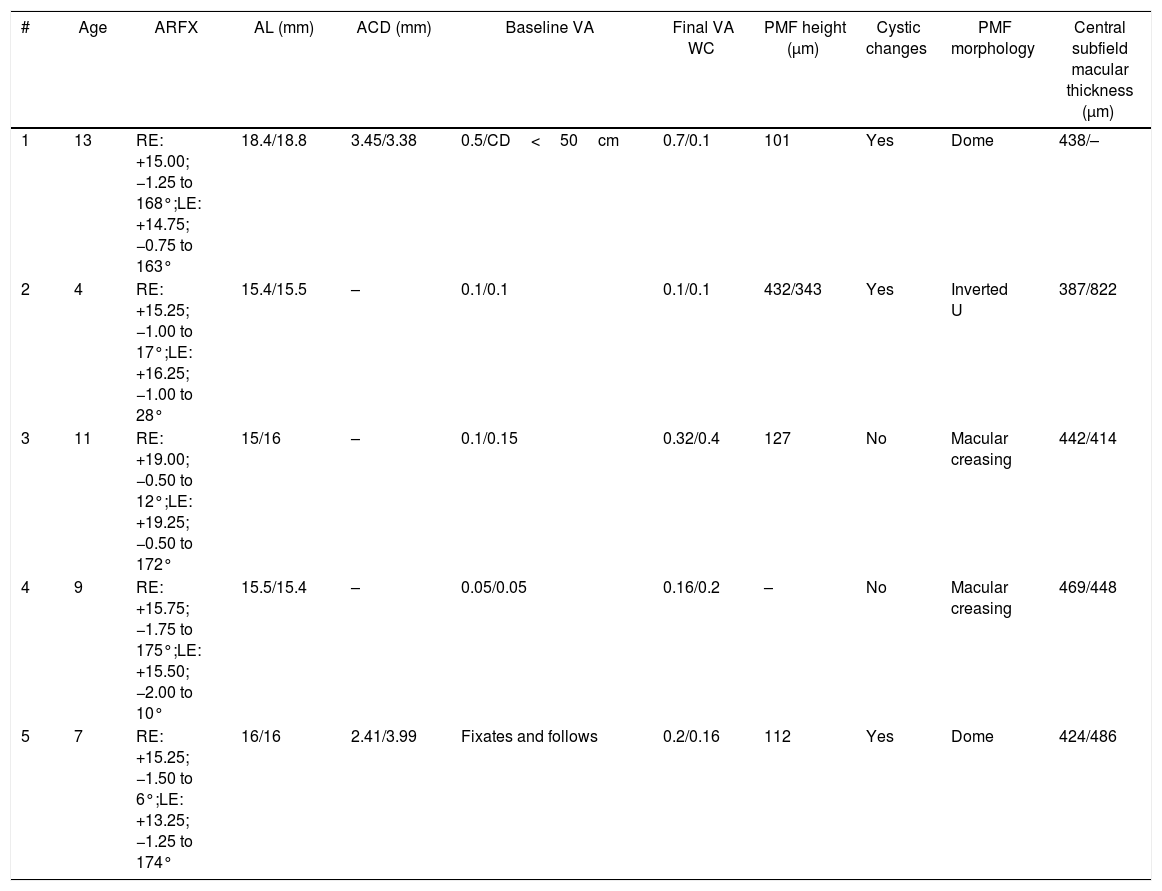Posterior microphthalmos is a rare condition that can be found in paediatric patients with increased farsightedness and reduced vision. A retrospective study is presented of 5 cases of posterior microphthalmia aged between 4 and 13 years. The following parameters were obtained: visual acuity, cycloplegic refractive error, optical biometry, slit lamp examination, intraocular pressure, and ocular ultrasound. The refraction, axial length and average visual acuity was +15.35Dp, 16.20mm and 0.13, respectively. The fundus was examined, optical coherence tomography was performed, and also retinography and fluorescein angiography in one case. In all cases, the absence of foveal depression and different morphotypes of the papillo-macular fold were observed in the tomography. In the absence of a specific treatment, the appropriate detection, management, and monitoring of this disease is important to improve and maintain the vision of patients and recognize possible complications.
El microftalmos posterior es un cuadro poco frecuente que puede encontrarse en pacientes pediátricos con hipermetropía elevada y visión reducida. Presentamos un estudio retrospectivo de 5 casos de microftalmía posterior en niños de edades comprendidas entre 4 y 13 años. Se obtuvieron los siguientes parámetros: agudeza visual, refracción bajo cicloplejía, biometría, examen en lámpara de hendidura, presión intraocular y ecografía ocular. La refracción, la longitud axial y la agudeza visual media fueron de +15,35Dp; 16,20mm y 0,13, respectivamente. Se examinó el fondo de ojo, se realizó tomografía de coherencia óptica y, en uno de los casos, retinografía y angiografía fluoresceínica. En todos los casos se evidenció ausencia de depresión foveal y diferentes morfotipos del pliegue papilo-macular por tomografía. Al no existir un tratamiento específico, es importante una adecuada detección, manejo y seguimiento de esta enfermedad para mejorar y mantener la visión de los pacientes y reconocer posibles complicaciones.









